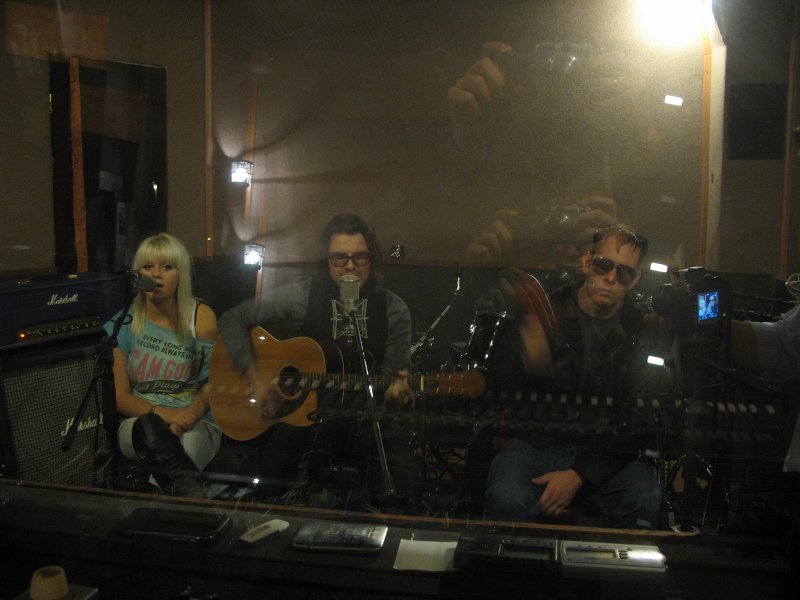
A common question is whether it’s possible to record the entire band or at least the main instruments simultaneously?
The short answer is: yes.
More in detail: We designed our studio to have multiple recording spaces. In each of them, all the necessary connections should be installed. This makes it possible to record the entire musical foundation at once.
An example:

The lineup of the band:
- Drums
- Bass
- Guitars
- Singing
We bring the guitar and bass heads into the main recording room or the technical room. We place the guitar cabinets in the central recording room. We connect them to the heads using speaker cables. We place the bass cabinet in the small tracking room.
The musicians receive their headphones, and the setup can begin.
We adjust the ideal balance for everyone to hear themselves and each other.
The drummer, or anyone else, can receive a metronome additionally, as needed. I note here that a metronome is not necessary for a perfect recording! The essence of simultaneous recording is to capture the vitality of the performance and avoid sterility.
The live effect of the recording comes from the musicians’ communication during play.
It is generally advisable to record vocals separately, so the musical foundations are recorded first. Of course, the vocalist can be in the recording room during this time to direct the band. You can also sing into the ears of the others in the technical room, helping the musicians to play.
After the setup, you can start recording! It’s worth recording the basics a few times and then selecting the best one to sing along to, as well as adding or improving certain parts.
By not picking up the instruments in the drum microphones, it’s easier to correct mistakes, at least for the non-drummer musicians. 🙂
The advantages of recording simultaneously are:
[list style=”list2″ color=”orange”]
- Cost-effective: 5-6 songs can be recorded in 5-8 hours.
- The music has a livelier effect compared to separately recorded instruments.
[/list]
The “disadvantages” of recording simultaneously 🙂
[list style=”list2″ color=”orange”]
- A song needs to be played with more or less (preferably less) mistakes.
[/list]
Of course, if the structure of the song allows it, you can always patch in after a mistake. Indeed, especially when the amps are in separate rooms, because in this case, you can correct mistakes just like in individual instrument recordings. Exactly, it’s not always necessary to play the whole song in one go. 🙂
